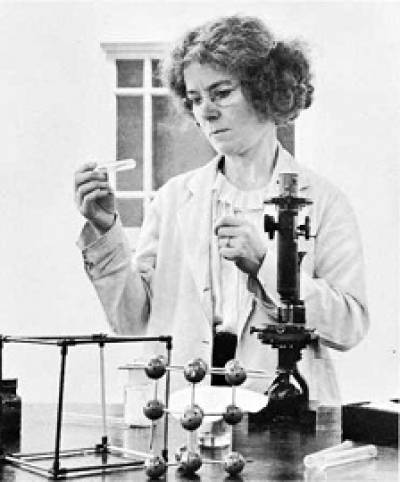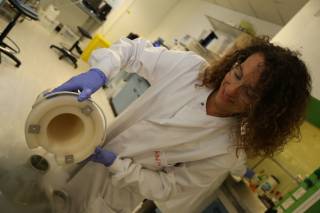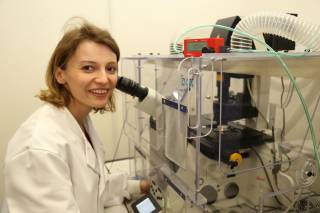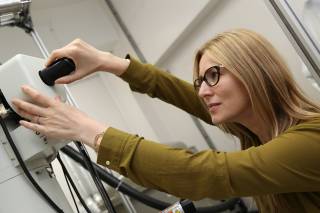Women in UCL Chemistry
Celebrating Women in Chemistry 2021
https://www.youtube.com/watch?v=uC37xK6wHWI
Celebrating International Women's Day 2019
To celebrate International Women's Day, we hear from a few of our female workforce, from students to professional services staff to academics to see why they chose a career in Higher Education, specifically in STEM and who inspired them from a young age.
Women at UCL: Presence and Absence 2016
The exhibition ‘Women at UCL: Presence and Absence’ was created to celebrate and recognise women at UCL who inspire those they work with. The exhibition, which was opened by the Provost on 9th March 2016, features 24 inspiring UCL women who were selected from around 200 nominations, highlighting the real impact UCL women have their colleagues. The exhibition profiled women from across the UCL community. A call went out asking staff and students to nominate a woman at UCL who had influenced them – either by inspiring or encouraging, or helping them to think differently about their work or study. A panel, made up of representatives from UCL’s equality groups, had the challenging but enjoyable task of selecting these 24 inspirational women from a pool of excellent nominees. As the response was so overwhelming, the panel considered it important to recognise everyone who had been nominated, so a booklet was created profiling every nominee.
The Chemistry Department received the most nominees within the MAPS Faculty, these went to Nicola Best (Phillips), Claire Carmalt, Helen Fielding, Katherine Holt, Caroline Knapp and Liz Read (pages 16-17).
The exhibition also included artwork exploring the history of women at UCL. Artist Kristina Clackson-Bonnington’s produced a series of works titled ‘Theirs to Ours’, a series of twelve mixed-media works that illuminate the institutional change that has taken place since the founding of UCL in 1826 – from the initial decision to admit women in 1878 to the re-negotiating of spaces and positions that is still taking place today. These artworks are included in this booklet.
- Meet the Women in Chemistry (previous years)
In recognition of International Women's Day on 8th March and the Chemistry's Athena Swan initiative, we shine a spotlight on our fantastic female researchers, who are pushing the frontiers in photochemistry, electrochemistry, chemical biology, inorganic and organic materials.
Read their breakthroughs, achievements, career highlights and goals for the future.
Professor Helen Fielding
Shedding new light on photochemistry in nature: from biological motifs to photoactive proteins
Professor of Physical Chemistry and Head of Physical Chemistry
Research: My research is aimed at understanding the electronic structure and excited state dynamics of photoactivated molecular systems that are of biological or technological interest. The techniques we use are frequency-resolved and time-resolved photoelectron spectroscopies and quantum chemistry calculations. The systems we study range from isolated molecules and anions in the gas-phase to molecules in solution and on surfaces.
Recent highlights include the discovery of a new electron transfer mechanism (Nature Communications 2016), observations of electronic relaxation mechanisms in the green fluorescent protein chromophore (Chemical Science 2013 and 2016) and the photoresponse of a unidirectional molecular rotary motor (in preparation for publication). The next exciting step will be extending our studies of isolated molecules to larger systems such as proteins.
Research in my group has resulted in the award of several prizes, from the Royal Society of Chemistry and the Institute of Physics.
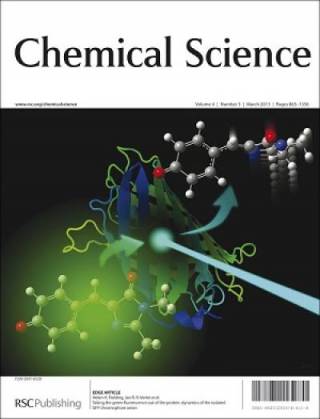
Career highlights: Our latest highlight has been the observation of amazing quality photoelectron spectra of molecules in aqueous solution, using our newly built and commissioned liquid jet photoelectron spectrometer.
Image: Taking the green fluorescence out of the protein: dynamics of the isolated GFP chromophore anion. Credit: Jan Verlet, Department of Chemistry, University of Durham.
Full Chemical Science articleProfessor Claire Carmalt

Developing innovative new routes to technologically important inorganic materials
Professor of Inorganic Chemistry and Head of the Chemistry Department, UCL
Research: My research group is focussed on developing innovative new routes to technologically important materials such as transparent conducting oxides (TCOs), photocatalysts and superhydrophobic paints.
Recent highlights include the development of a new technique, combinatorial aerosol assisted chemical vapour deposition (AACVD), which provides a synthetic tool for rapidly optimizing the functional properties of thin films, and the development of superhydrophobic paints.
I currently lead a project with AzkoNobel developing smart decorative paints utilising these superhydrophobic materials via an innovateUK grant. The development of robust superhydrophobic paints (led to a huge amount of media interest with features on >120 websites, interviews for newspapers/magazines/radio, and filming by Reuters.
I am also leading a large consortium EPSRC grant (£2.3m) which involves UCL, Loughborough University and 8 companies (NSG, SunChemicals, Xaar, Teer, Diamond Coatings, Malvern, AzkoNobel, PlasmaQuest). We are working closely with industrial partners to investigate scale up opportunities to create new and efficient ways to produce TCOs.
Career highlight: winning the £2.3m EPSRC grant on manufacturing, publishing the robust superhydrophobic paints in Science and being the first female Head of Chemistry!
Dr Katherine Holt
Energy at Interfaces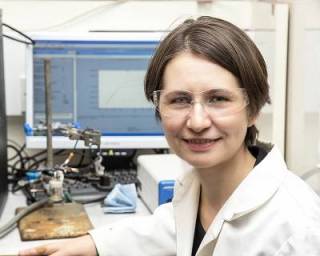
Reader of Physical Chemistry and Chair of Teaching Committee
Research: My research is focused on the solid-solution interface and the processes that take place there. I have two broad areas of interest: one is understanding redox and charging mechanisms at the surface of carbon materials and the second is providing mechanistic insight into the structure of electrocatalysts under catalytic conditions.
Carbon electrodes are ubiquitous in electrochemical applications (sensors, supercapacitors, batteries) and hence there is real interest in understanding how changes in their surface chemistry and solvation can influence their electrochemical performance. On the other hand, carbon-based materials such as diamond and polymers are insulating materials and so can’t be used as electrodes. However, there is still great interest in understanding how and why they are able to accumulate charge at their surfaces. It is well know that rubbing two insulating materials together can cause electrostatic charging, but why this is so is not well understood.
Many important energy technologies of the future rely on electrocatalysis – these include electrochemical generation of hydrogen by proton reduction and reduction of CO2 to make fuels. Different catalyst materials and molecules are required to make these reactions proceed, but a common problem is that these catalysts can be unstable and break down during use. I work closely with the synthetic chemist who make these materials and molecules and carry out mechanistic studies to understand how and why they work (or don’t!).
Career Highlights: Won Edward Harrison prize of the RSC in 2007, Previous holder of EPSRC and Ramsay Research Fellowships.
Dr Caroline Knapp
Designer Precursor Development for Metal Ink Formulation and the Patterning of Conductive Features
Ramsay Memorial Fellow
Research: Our research investigates the synthesis of precursors to be used as metal ink formulations with the ultimate goal of producing highly conductive metallic patterning. Research time is split between the synthesis, isolation and characterisation of novel compounds, particularly of silver, copper and aluminium and their subsequent reduction to the metal.
As part of an ongoing collaboration with scientists at the Luxembourg Institute of Science and Technology (LIST, www.list.lu) we have been developing the use of atmospheric-pressure plasma enhanced chemical vapour deposition (AP-PECVD). Current highlights include recent successes at low temperature, which have shown to be scalable and so lend themselves to industrial application.
Results this year include the crystallographic characterisation of a variety of novel copper precursors. The first of these compounds to be tested has already shown to be an excellent precursor to copper metal, converting at temperatures as low as 100 °C! Time resolved studies mapped using PXRD at a range of temperatures show the linear rate of conversion from precursor to copper metal.
Career highlights: Our latest highlight has been the deposition of silver coatings at room temperature and under atmospheric pressure (pictured below), the low temperatures allows a variety of substrates to be used (including paper and economical plastics with low glass transition (Tg) temperatures).
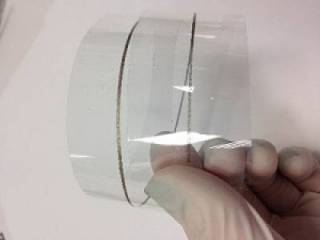
Image: 30 cm conductive silver track deposited on polyethylene napthalate (PEN) by AP-PECVD at room temperature. Credit: C. E. Knapp, UCL; N. D. Boscher et al., LIST.
Dr Laure Benhamou
Exploitation of biomass: towards a greener future for chemistry.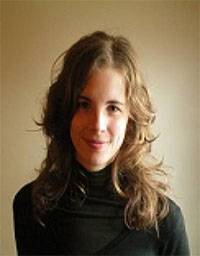
Research: My current research is focused on the sustainable synthesis of small chiral fragments from biomass. This project is aimed at practical applications to drug design through our partnership with the pharmaceutical industry (GSK & AstraZeneca).
Career highlights: In line with the awareness and effort to reduce the impact of human activity on the environment, I have always been dedicated to promote and develop eco-friendly catalytic processes using my dual background in inorganic and organic chemistry. Recent highlights include the development of palladium catalysed methodologies for the synthesis of highly functionalised small molecules (Chem Eur. J. 2014 ; Org. Biomol. Chem. 2016), the publication of a review on palladium catalysed oxidation of alkenes (Synthesis, 2015) and the synthesis of chiral tetrahydrofurans through the selective dehydration of pentose sugars (manuscript in preparation).
Dr Emma Gibson
Developing in situ and operando techniques to understand catalytic systems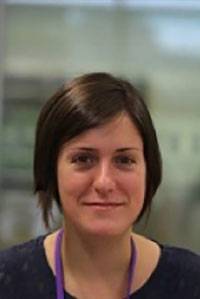
Senior Research Associate
Research My main research interests lie in the study of heterogeneous catalysts used for industrially relevant reactions. I am particularly interested in the development of the reactor systems capable of studying these catalysts under realistic reaction conditions, using mainly XAFS, FTIR and Raman spectroscopies. Most recently, as part of a UK Catalysis Hub project, I am working with Queen’s University Belfast and the University of Manchester investigating the effect of non-thermal plasmas on catalysts using XAFS.
Research highlights: Recent highlights include the combined XAFS/DRIFTS study on the restructuring of a AuPd/Al2O3 catalyst under reaction conditions (Chem. Mater., 2015, 27, 3714−3720) and the study of methanol oxidation over Fe2O3 and the effect of surface molybdenum (Faraday Discuss., 2016, 188, 387–398).
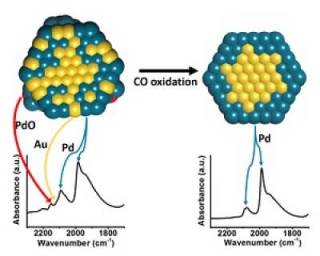
Image: The restructuring of AuPd nanoparticles during CO oxidation followed by combined XAFS/DRIFTS.
Dr. Inés Lezcano-González
Towards a better understanding of reaction mechanisms and active species on zeolite catalyst materials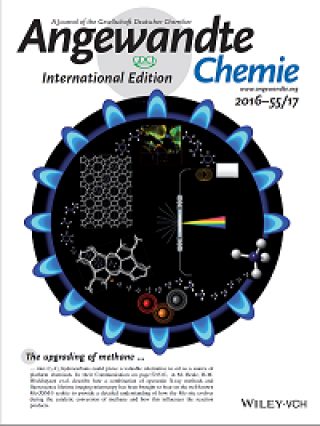
Postdoctoral Research Associate
Research: My research career is mainly focused on Heterogeneous Catalysis, with special emphasis on zeolite-based processes. In my research I combine the synthesis, characterisation and testing of zeolite materials to obtain a better understanding of the working mechanisms of catalytic processes. Of particular interest is the development and application of in situ and operando advanced characterisation methods, such as NMR or X-ray techniques, to the study of zeolite catalyst materials under real reaction conditions.
Career highlights: Recent highlights include the identification and characterisation of Mo species involved in the catalytic conversion of methane (Angewandte Chemie Int. Ed., 2016) and the study of Cu migration behaviour in zeolites during the Selective Catalytic Reduction (SCR) of NOx and its influence on catalytic activity (Chem. Commun., 2016).
Image: Molybdenum Speciation and its Impact on Catalytic Activity during Methane Dehydroaromatization in Zeolite ZSM-5 as Revealed by Operando X-ray Methods
Dr Yiwen Pei
Stimulus-Responsive Materials and Nanoparticles from Well-defined Polymers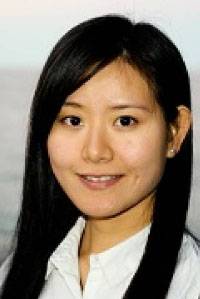
Post-Doctoral Research Assistant
Research: My research focuses on bridging the interface of creative polymer chemistry, material science and nanotechnology, to allow for the development of stimulus-responsive polymers and multifunctional soft matter nanomaterials that are of significant importance in biomedical, microelectronics and advanced nanoscience applications. The key techniques use are controlled radical polymerisation (specifically RAFT and ATRP), grafting polymers from/to solid surfaces, self-assembly of block copolymers (specifically polymerisation-induced self-assembly) and post-polymerisation modification.
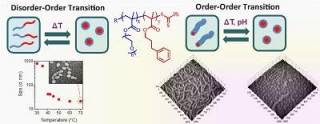
Recent highlights include the synthesis of block copolymer nanoparticles with interesting stimulus-triggered ‘shape-shifting’ properties for biomedical applications (Polymer Chemistry 2016 and Macromolecules 2014), the synthesis, modification and electrochemical properties of reactive conjugated polymers based on poly(pentafluorophenylacetylene) (Macromolecular Rapid Communications 2016) and the fabrication of switchable polymeric surfaces to achieve electrochemical control over polymers at nanometer level (Langmuir 2012). Currently, I am working on an exciting research project involving the synthesis of advanced biodegradable amphiphilic block copolymer for drug delivery and biomedical applications.
Career highlight: Latest highlight has been the synthesis of triply responsive soft matter nanoparticles using polymerisation-induced self-assembly (PISA) technique. These nano-objects exhibit both disorder-order transitions and order–order, worm-to-sphere, morphology transitions that respond reversibly to subtle changes in environmental conditions. (Polymer Chemistry 2016)
Dr Fabiana Subrizi
Biocatalytic and sustainable routes for the upgrading of carbohydrates and furfural from biomass
Post-Doctoral Research Assistant
Research: My research lies mainly in the fields of synthetic chemistry and biocatalysis covering topics in biocatalytic C‒C bond formation, asymmetric synthesis and carbohydrate chemistry. As part of an EPSRC grant in collaboration with two top UK Universities and several industrial partners, we are focus on the development of novel biocatalytic and sustainable routes for the upgrading of carbohydrates and furfural from biomass. We are currently investigating applications with transketolases (TKs), transaminases (TAms) and other biocatalytic enzymes including imine reductases (IREDs).
Recent highlights include the identification of high-performing TKs able to accept L-arabinose as a substrate which allowed the first efficient stereoselective (one step) synthesis of L-glucoheptulose as a potential therapeutic for hypoglycemia and cancer (Green Chem. 2016, 18, 3158-3165).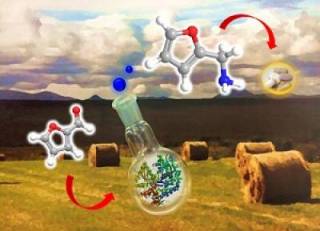
We also developed one-pot synthetic routes from furfurals to polysubstituted aromatic compounds in water, without the need for any organic solvents, which allowed us to produce a variety of polysubstituted benzenes including pharmaceutically relevant compounds (Green Chem. 2016, 18, 1855-1858). This work has been highlighted with a back cover in Green Chemistry.
As a future exciting step we are aiming to use IREDs and TAms for the amination of carbohydrates from biomass and the production of chiral synthons for medicinal chemistry.
Career highlights: We recently developed a mild sustainable method for the amination of furfural and derivatives from biomass to access furfurylamines using TAms (Green Chem. 2017, 19, 397-404). This work has been highlighted with a back cover in Green Chemistry.
Dr Helen Grounds
The synthesis of near-infrared luciferin analogues for multiparametric bioluminescence imaging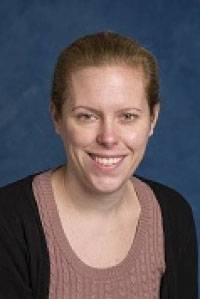
Laboratory Manager (Organic Section) and Senior Research Associate
Research: I have worked on a variety of projects within Professor Jim Anderson’s group. These have included C-H activation; the synthesis of chiral planar ferrocene chelate ligand precursors and the synthesis of (-)-epicatechin gallate analogues for modulation of staphylococcal β-lactam resistance.
Most recently my work has focused on the synthesis of Infraluciferin – a novel analogue of luciferin and it’s uses in bioimaging. Bioluminescence imaging has revolutionised molecular genetic imaging in biomedical research. However, the use of luciferin (isolated from fireflies) has been limited as λmax = 558 nm. At this wavelength, absorption of visable light by haemoglobin and melanin restricts image resolution and signal penetration. Our novel Infraluciferin has λmax = 708 nm improving resolution and it can also be used for multiparametric imaging.
Career highlights: Synthesising Infraluciferin - the furthest red shifted luciferin analogue to date. This has enabled further collaboration with a wide range of groups including physical chemistry, pharmacy, haematology and radiochemistry both at UCL and around the world.
Dr Mingqing Wang
Harvesting Energy from Sunlight: Low Cost and Durable Thin Film Solar Cells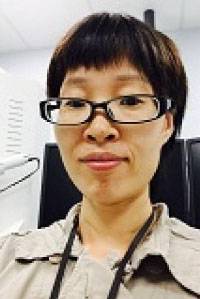
Research Associate:UCL Institute for Materials Discovery
Research: My research is aimed to develop low cost processes and materials for high efficiency thin film solar cells through materials design, principle analyse, and device optimization; including organic/inorganic hybrid solar cells, non-vacuum CIGS solar cells and CZTS solar cells. I am also interested in adapting the knowledge and experiences accumulated in solar cells to light emitting diodes, field effect transistors and bioelectronics.
Recent highlights include Electrostatic Assisted Vapour Deposition (ESAVD) produced CIGS solar cells with 10.7% power conversion efficiency (Acs Applied Materials & Interfaces 2015) and ESAVD produced CZTS solar cells with efficiency of 6.5%( Scientific Reports 2016). The next exciting step will be extending our studies of inorganic thin films solar cells to develop stable fully-inorganic perovskite solar cells.
Career highlights: Our latest highlight has been the development of fully non-vacuum processed CIGS solar cells using electrodeposited CIGS absorber and Ag nanowires based transparent TCO with efficiency approaching 14%(Acs Applied Materials & Interfaces 2016).This technique has been scaled up on 5cmx5cm substrate in the lab . It provides a vision for a fully non-vacuum, environmental friendly, and low cost non-vacuum production line of CIGS-based solar cells.
Professor Helen Hailes
Sustainable strategies for molecular assembly using Nature’s biocatalysts and the synthesis of chemical biology tools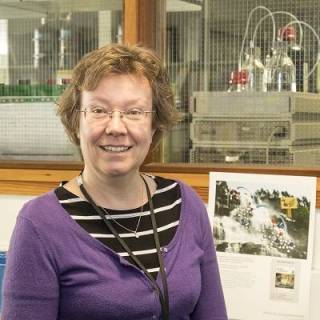
Professor of Chemical Biology
Research: My research is focused on the development of new green chemistry approaches in synthesis. Several projects involve the discovery, optimisation and use of biocatalysts in single or multi-step pathways to construct single isomer biologically active molecules. In addition we are investigating reactions and multi-step cascades in water and other green solvents. We are also using synthetic chemistry to probe and understand biological problems: this includes the design and synthesis of new anti-bacterials and lipids for nanoparticle delivery applications or as imaging reagents.
Recent highlights include the discovery of a new single step enzymatic approach to the synthesis of spiro-tetrahydroisoquinolines (Nature Communications 2017), the use of a metagenomics approach for new biocatalyst discovery (Green Chemistry 2017) and the use of transaminase and transketolase enzymes in synthesis (Green Chemistry 2016 and 2017). In exciting current work we are applying our biocatalysts in enzymatic and chemoenzymatic cascades (Green Chemistry 2015 and publications in preparation) to enable the one pot synthesis of complex natural and novel alkaloids from low cost starting materials.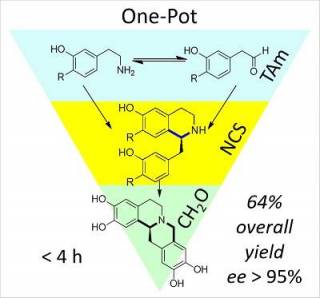 Research in my group has resulted in the award of prizes from the Royal Society of Chemistry and the Institute of Chemical Engineers.
Research in my group has resulted in the award of prizes from the Royal Society of Chemistry and the Institute of Chemical Engineers.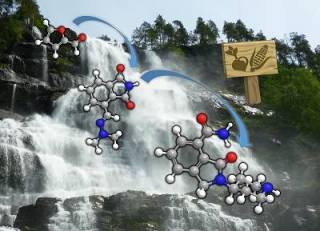
Career highlights: A recent highlight has been the observation that one of the key enzymes in the benzylisoquinoline alkaloid biosynthetic pathway can accept unactivated ketones in very high yields, which is unprecedented in Nature.
Paper: Chemical cascades in water for the synthesis of functionalized aromatics from furfurals
Dame Kathleen Lonsdale (1903-1971)
Dame Kathleen Lonsdale, born 28th January 1903 in Newbridge, County Kildare, Ireland, played a fundamental role in establishing the science of crystallagraphy and in her scientific career scored several important firsts. From 1908 to 1914 Kathleen attended Downshall Elementary School i in Seven Kings and then won a scholarship to Ilford County High School for Girls. She was a good student, especially in mathematics and science. However, she had to attend classes in physics, chemistry and mathematics at the boys' high school because the girls' school didn't offer these subjects.
Kathleen did well in her exams and won a county major scholarship, with distinctions in six subjects. She was allowed to enter Bedford College for Women, part of the University of London, at 16. She first read mathematics but at the end of her first year switched to physics, against the advice of her old headmistress, who said she would never distinguish herself in physics. Kathleen came top in the University of London BSc examination in 1922, with the highest marks for 10 years. She was invited by W. H. Bragg, one of her examiners and a pioneer of X-ray diffraction, to join his research school at University College, London (UCL). On Bragg's advice she worked on the structure of simple organic crystals, and collaborated with W. T. Astbury on the theory of X-ray diffraction. In 1923 W. H. Bragg moved to the Royal Institution (RI) in London and Kathleen went with him. Bragg set up team of young researchers, including John Desmond Bernal.
It was at UCL that Kathleen met Thomas Lonsdale, an engineering student at University College. They were married in 1927 and moved to Leeds the same year when Thomas got a job at the Silk Research Association. Thomas encouraged her to continue her scientific work and she worked on X-ray diffraction in the University of Leeds' department of physics. Whilst there, C. K. Ingold in the Chemistry Department gave her some crystals of hexamethylbenzene to study. Her results showed conclusively that the benzene ring was flat, something that chemists had been arguing about for 60 years. This was an important milestone in organic chemistry. Lonsdale also applied Fourier methods for the first time to analyse X-ray patterns in solving the structure of hexachlorobenzene.
During her time at the RI Lonsdale worked in many areas related to X-ray crystallography - both theoretical and experimental. She was awarded a DSc by University College in 1936 and in 1945 she and Marjory Stephenson became the first women Fellows of the Royal Society.
After World War II Lonsdale was encouraged to move into academe and in 1946 she became reader in crystallography at UCL. In 1949 she became professor of chemistry and head of the department of crystallography. Only then, at the age of 43, did she start to build up her own research school and get involved in teaching.
She achieved many firsts in the arena of professional science and broke through several glass ceilings, blazing a trail that many women have followed, particularly in crystallography, where women are still strongly represented. These include being one of the first two women elected as Fellows of the Royal Society, the first woman professor at UCL, the first woman president of the International Union of Crystallography, and the first woman president of the British Association for the Advancement of Science. She was made a DBE in 1956.
Jobs/Positions
1922-23 Research Assistant to William H. Bragg, University College, London
1923-27 Research Assistant to William H. Bragg, The Royal Institution, London
1927-30 Amy Lady Tate Scholar and part-time demonstratorship, Leeds University
(Between 1929 and 1934, Lonsdale gave birth to three children, and continued her research at home.)
1934 The Royal Institution
1935-37 Leverhulme Research Fellow, The Royal Institution, London
1944-46, Dewar Fellow, The Royal Institution, London
1946-49 Reader in Crystallography, University College, London. ( Founded Crystallography Group.)
1947 Special Fellow of the United States Federal Health Service
1949-68 Professor of Chemistry and Head of the Department of Crystallography, University College, London
1968-71 Professor Emeritus, University College, London
 Close
Close


